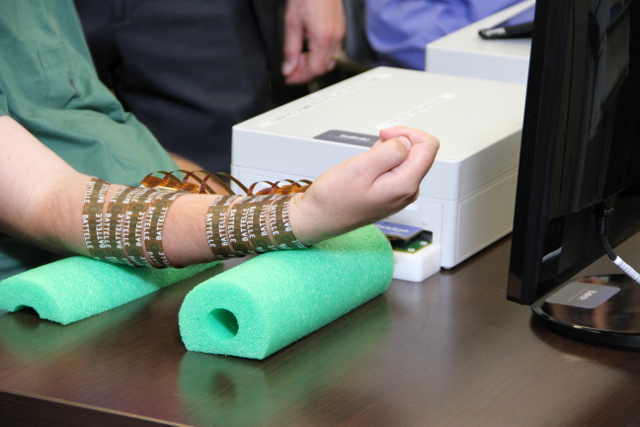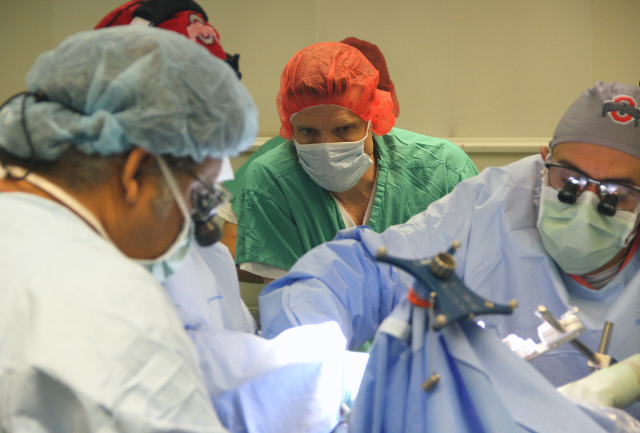Ohio State Neurobridge Restores Muscle Function To Paralyzed
The Ohio State University Wexner Medical Center in conjunction with the Battelle Memorial Institute have created a neural bridge that allows brain function to bypass broken nerve connections and return movement to the paralyzed. The first patient to use the new tech, dubbed Neurobridge, is Ian Burkhart.
[youtube width=”640″ height=”400″]https://www.youtube.com/watch?v=fEbioFpdK5E[/youtube]
Neurobridge is currently in clinical trials being conducted as a clinical trial at the Wexner Medical Center.
Initially, it piqued my interested because I like science, and its pretty interesting. Ive realized, You know what? This is the way it is. Youre going to have to make the best out of it. You can sit and complain about it, but thats not going to help you at all. So, you might as well work hard, do what you can and keep going on with life.
23 years old and quadriplegic, Burkhart underwent 3 hours of invasive surgery to place a sensor on his motor cortex. The sensor picks up the brain’s electrical impulses and relays them out for translation (Battelle has also developed a solution without the need for surgery which allows users to stimulate other local arm muscles to initiate finger movement).
A local computer receives the brain signals from what looks to be a receiver attached to Burkhart’s skull, then translates the thoughts into electrical impulses applied directly to the skin via an electrode sleeve. With the advances we’ve had in computing and medical science, it’s likely that we’ll be seeing a lot more of this type of tech in the future. There’s, of course, a lot going on behind the scenes here too: complex algorithms and brain signal recognition fed through a computer to trigger precise placement and level of muscle stimulation.

Given time and research, there’s no reason a sleeve with a higher density of electrodes should provide a near exact replication of natural impulses. Google, Pandora, and Spotify have thrown piles of cash at recognition of user taste in media. Imagine the same being done for brain signals of the paralyzed! With proper optimization and hardware, muscle paralysis could be almost entirely circumvented with a smartphone, sleeve, and brain monitor.

